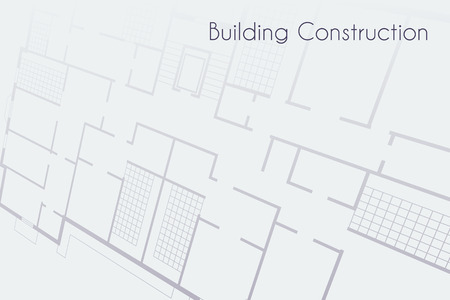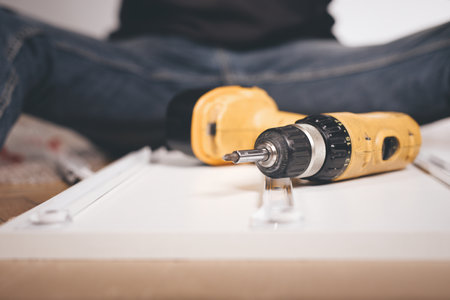1. Understanding the Importance of Subfloor Preparation
Before installing any type of flooring—whether it’s hardwood, laminate, vinyl, or tile—the condition of your subfloor plays a critical role in how your floor will look and perform over time. A properly prepared subfloor provides a stable, level foundation that helps prevent issues like squeaking, shifting, or premature wear. This is especially important across the U.S., where climate differences and housing structures vary widely.
Why Subfloor Prep Matters
A well-prepared subfloor ensures your new flooring:
- Stays level and secure
- Lasts longer without damage or warping
- Feels solid underfoot with minimal noise
- Performs better in different climates and humidity levels
Common Subfloor Issues That Affect Flooring Installation
If not addressed before installation, these problems can lead to costly repairs down the road:
| Subfloor Issue | Potential Problem |
|---|---|
| Uneven surfaces | Creates gaps or misaligned boards |
| Moisture buildup | Leads to mold, mildew, or warped flooring |
| Loose panels or nails | Causes squeaking or movement when walked on |
| Poor insulation | Affects energy efficiency and comfort underfoot |
Climate Considerations Across the U.S.
The U.S. has a wide range of climates—from humid Southeast regions to dry Southwest areas and cold Northern states. Each region affects subfloors differently:
| Region | Climate Concern | Subfloor Consideration |
|---|---|---|
| Southeast (e.g., Florida) | High humidity and moisture | Use moisture barriers; check for mold or rot |
| Northeast (e.g., New York) | Cold winters and heating cycles | Ensure proper insulation and expansion gaps |
| Southwest (e.g., Arizona) | Dry heat and temperature swings | Select materials that resist cracking and shrinking |
| Midwest (e.g., Illinois) | Seasonal changes with moisture fluctuations | Test moisture levels; secure all panels tightly |
The Bottom Line on Subfloors
No matter what type of flooring you’re installing or where you live in the U.S., taking time to properly assess and prepare your subfloor is key to getting professional-looking results that last. In the next section, we’ll go over how to inspect your current subfloor and identify what needs fixing before moving forward with installation.
2. Inspecting and Assessing Your Current Subfloor
Before you install any type of new flooring, its essential to take a good look at the subfloor underneath. A solid, clean, and level subfloor is the foundation for a successful flooring installation. Heres how to check for some common issues that could cause problems down the road.
Check for Moisture
Moisture is one of the biggest enemies of flooring—especially hardwood, laminate, or vinyl. Too much moisture can cause warping, buckling, or mold growth.
How to Check:
- Visual Inspection: Look for water stains, discoloration, or musty odors.
- Moisture Meter: Use a moisture meter to get an accurate reading. For wood subfloors, readings should generally be below 12%.
Listen and Feel for Squeaks
Squeaky floors often mean there are loose boards or gaps in your subfloor. This can be annoying and may affect the integrity of your new floor.
How to Check:
- Walk Around: Step across different areas of the floor and listen for squeaks or creaks.
- Tighten Screws: If you hear squeaking, try securing loose spots with screws into the joists below.
Look for Damage
Your subfloor should be free from cracks, rot, or insect damage before installing new flooring. Ignoring these issues can lead to costly repairs later on.
Signs of Damage:
| Type of Damage | Description |
|---|---|
| Plywood Delamination | Plywood layers separating; feels soft or spongy underfoot |
| Mold or Mildew | Dark spots, musty smell—usually caused by moisture |
| Pest Damage | Tiny holes or sawdust trails from termites or other insects |
Ensure the Subfloor is Level
An uneven subfloor can cause your new flooring to shift or wear out quickly. Make sure everything is as flat as possible before proceeding.
Tools You’ll Need:
- Straightedge or Level: A 6-foot level works great for checking dips and high spots.
- Tape Measure: Minor height variations (less than 1/8 inch over 6 feet) are usually acceptable depending on the flooring type.
If You Find Uneven Areas:
- Dips: Fill with leveling compound.
- Bumps: Sand down high spots carefully.

3. Removing Old Flooring and Cleaning the Surface
Before installing new flooring, its crucial to properly remove the existing floor and thoroughly clean the subfloor. This step ensures a smooth, even surface that helps your new floor last longer and look better. Here’s how you can safely and effectively tackle this part of the project.
Step-by-Step: How to Remove Old Flooring
The method you’ll use depends on what type of flooring youre removing. Below is a quick guide:
| Flooring Type | Tools Needed | Removal Tips |
|---|---|---|
| Carpet | Utility knife, pry bar, pliers | Cut into strips for easy removal; pull up tack strips carefully |
| Vinyl or Linoleum | Pry bar, scraper, heat gun (if glued) | Soften adhesive with heat; scrape slowly to avoid damaging subfloor |
| Tile | Hammer, chisel, safety goggles | Break tiles gently; remove mortar with scraper or grinder |
| Hardwood or Laminate | Circular saw, pry bar, mallet | Saw into sections for easier lifting; watch out for nails and staples |
Cleaning the Subfloor Thoroughly
Once the old flooring is removed, it’s time to prepare the surface:
1. Remove Debris and Dust
Sweep or vacuum the entire area to get rid of dust, nails, staples, and any leftover adhesive. A shop vac works great for this task.
2. Inspect for Damage
Look for signs of mold, rot, water damage, or cracks. Any issues should be repaired before moving forward. For example:
- If the subfloor is soft or spongy in spots, it may need replacement.
- Tighten loose floorboards with screws to eliminate squeaks.
3. Level the Surface
A level subfloor is key to a successful installation. Use a long level or straightedge to check for uneven areas. If needed:
- Sand down high spots on wood subfloors.
- Add leveling compound to low spots on concrete subfloors.
4. Dry Completely Before Installation
If your subfloor has been cleaned with any liquids or if there was moisture present during removal, make sure it’s completely dry before installing the new floor. Moisture can lead to warping or mold growth under your new flooring.
4. Leveling and Repairing Subfloor Imperfections
A smooth, even subfloor is essential for a successful flooring installation. Uneven spots, holes, or dips can lead to squeaks, shifting, or premature wear of your new floor. In the U.S., homeowners and contractors use a variety of methods and products to prepare subfloors properly. Below, we’ll explore some common solutions for leveling and repairing imperfections in both wood and concrete subfloors.
Common Subfloor Issues
- High spots: Raised areas that need sanding down.
- Low spots or dips: Areas that require filling or leveling compounds.
- Cracks and holes: Need patching to create a flat surface.
Tools and Materials Often Used in the U.S.
| Product/Tool | Purpose | Best For |
|---|---|---|
| Belt Sander or Floor Sander | Sands down high spots on plywood or OSB subfloors | Wood Subfloors |
| Self-Leveling Compound | Fills in low areas to create an even surface | Plywood & Concrete Subfloors |
| Patching Compound (e.g., Henry 345, Ardex Feather Finish) | Patches cracks, small holes, and minor dips | Mainly Concrete Subfloors |
| Trowel | Smooths out patching or leveling compound | All Subfloor Types |
| Straightedge or Level | Checks for uneven areas across the floor | All Subfloor Types |
Sanding High Spots on Wood Subfloors
If you notice raised seams between plywood sheets or other uneven areas, using a belt sander is a common solution. Always wear a dust mask and ensure proper ventilation. Sand gradually to avoid damaging the subfloor layers beneath.
Patching Holes and Cracks
Tiny holes left by nails or screws, as well as small cracks, can be filled using patching compounds designed for subfloor repair. Mix according to the product instructions and apply with a trowel. Allow it to dry completely before proceeding.
Smoothing Out Low Areas with Self-Leveling Compound
If your floor has more significant dips or valleys, a self-leveling compound can be poured over the area to automatically settle into low spots. This is especially helpful when installing tile, vinyl planks, or engineered hardwood that needs a very flat base.
Tips When Using Self-Levelers:
- Use primer first if recommended by the manufacturer.
- Dams (temporary barriers) may be needed around vents or doorways to contain the liquid compound.
- The room temperature should be consistent during drying time—usually between 60°F–80°F (15°C–27°C).
A well-leveled subfloor sets the stage for a smooth installation process and helps extend the life of your new flooring. By using the right tools and materials commonly found in American hardware stores like Home Depot or Lowe’s, you can handle most imperfections with confidence.
5. Applying Underlayment for Extra Support
Before installing your new floors, adding an underlayment is a smart move that can make a big difference in the performance and comfort of your flooring. Underlayment is a thin layer placed between your subfloor and the finished floor. It helps with soundproofing, adds cushioning, and provides moisture protection—especially important when working with hardwood, laminate, or vinyl flooring.
Why You Need Underlayment
Even if your subfloor is clean and level, underlayment adds that extra layer of support. Heres what it can do:
- Sound Reduction: Helps reduce noise between floors, which is great for multi-level homes or apartments.
- Moisture Barrier: Protects your flooring from moisture that can rise up from below, especially in basements or humid climates.
- Cushioning: Adds comfort underfoot and makes walking on hard surfaces easier on your joints.
Choosing the Right Underlayment
The type of underlayment you need depends on the kind of flooring youre installing. Heres a quick guide to help you choose:
| Flooring Type | Recommended Underlayment | Main Benefits |
|---|---|---|
| Hardwood | Cork or felt underlayment | Sound absorption, minor leveling, insulation |
| Laminate | Foam with vapor barrier | Cushioning, moisture protection, sound reduction |
| Vinyl Plank (LVP/LVT) | Rigid underlayment with moisture barrier | Mold prevention, added stability, sound dampening |
Tips for Installing Underlayment
- CLEAN FIRST: Make sure your subfloor is completely clean and dry before laying down underlayment.
- DIRECTION MATTERS: Roll out underlayment in the same direction as your new flooring to keep things consistent.
- TAPE THE SEAMS: Use seam tape to connect pieces of underlayment so they don’t shift during installation.
A Note on Built-In Underlayments
If youre using flooring that already has an attached underlayment (common with some vinyl planks), check the manufacturer’s guidelines. Adding another layer may not be necessary—or even recommended.
6. Final Checks Before Installation Day
Before you begin laying your new floor, it’s important to complete a few key checks to ensure everything is ready for a smooth and successful installation. These final steps help prevent future issues like warping, gaps, or buckling. Here’s what you need to do:
Verify Moisture Levels
Moisture is one of the biggest threats to flooring—especially hardwood and laminate. Use a moisture meter to check both the subfloor and the flooring materials. Different types of subfloors (like plywood or concrete) have different acceptable moisture levels:
| Subfloor Type | Recommended Moisture Level |
|---|---|
| Plywood or OSB | Less than 12% |
| Concrete | Less than 4% (Tramex) or under 75% RH (Relative Humidity) |
If moisture levels are too high, consider using a moisture barrier or allowing more time for drying before installation.
Acclimate Flooring Materials
Let your flooring adjust to the rooms temperature and humidity before installing. This process is called acclimation. It helps prevent expansion or contraction after the floor is laid down.
General Acclimation Guidelines:
- Leave the flooring in its box in the installation room.
- Lay boxes flat and open them slightly to allow air circulation.
- Acclimate for at least 48–72 hours, depending on manufacturer recommendations.
Control Room Climate
The environment in which youre installing your floor plays a huge role in how well it turns out. The room should be climate-controlled and within normal living conditions—this means:
- Temperature between 60°F–80°F (15°C–27°C)
- Relative humidity between 35%–55%
This range helps keep your flooring stable during and after installation. Be sure your HVAC system is running if you’re installing in a new build or during seasonal weather changes.
Quick Checklist Before You Start
| Task | Status |
|---|---|
| Subfloor clean and level | ☑ (Check) |
| Moisture levels tested and acceptable | ☑ |
| Flooring acclimated properly | ☑ |
| Room temperature and humidity controlled | ☑ |
Taking the time to complete these final checks ensures your flooring project starts off on the right foot—literally!


